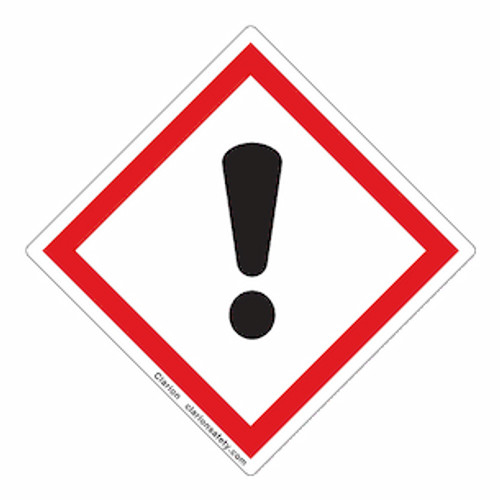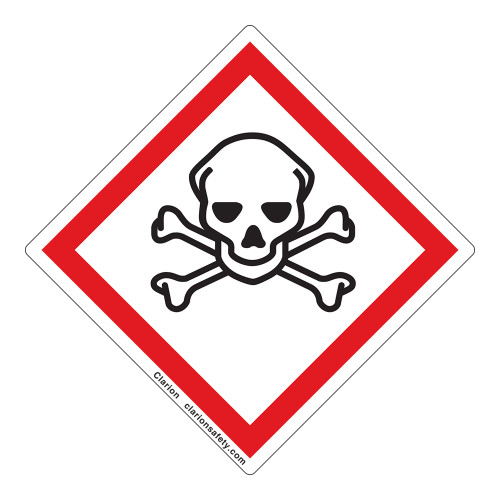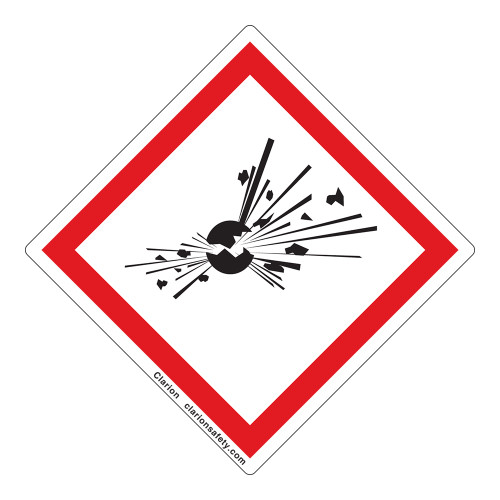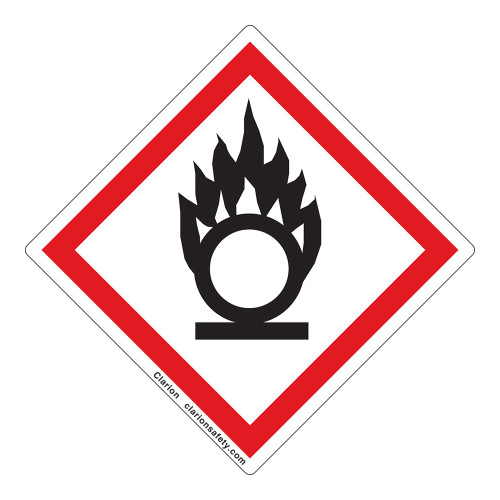-

Health Hazard Label (GHS6238-)
Starting at $0.42 / each -

Exclamation Mark Label (GHS6240-)
Starting at $0.42 / each -

Flame Label (GHS6239-)
Starting at $0.42 / each -

Corrosion Label (GHS6241-)
Starting at $0.42 / each -

Skull and Crossbones Label (GHS6244-)
Starting at $0.42 / each -

Exploding Bomb Label (GHS6242-)
Starting at $0.42 / each -

Flame Over Circle Label (GHS6245-)
Starting at $0.42 / each -

Gas Cylinder Label (GHS6243-)
Starting at $0.42 / each
GHS, also known as the Globally Harmonized System of Classification and Labeling of Chemicals, is a regulation adopted by OSHA to better protect workers from hazardous chemicals. Conforming to the worldwide GHS standard is mandatory. If you’re a product manufacturer with chemical hazards related to your products or processes, we recommend using the appropriate GHS pictogram in the symbol panel of your product safety label.
What does Clarion Safety have to offer? View the full scope of our solutions and services.
The GHS regulation requires that all hazardous chemicals be properly labeled, and these labels must incorporate specific graphical symbols meant to convey the hazards related to each chemical. Nine GHS pictograms make up the GHS symbol vocabulary for defining specific types of chemical-related hazards. The use of each pictogram is determined by the predefined hazard classification of the chemical of concern. These pictograms – representing hazards and meanings like carcinogens, flammables, irritants, gases under pressure, explosives, skin corrosion/burns, oxidizers and aquatic toxicity – are used on labels appearing on chemical products and on their accompanying safety data sheet (SDS). Each GHS pictogram consists of a distinctive black symbol appearing on a white background framed inside a red diamond-shaped border.
Clarion Safety’s GHS products are designed to conform to the latest regulation standards to properly communicate hazards and the need to take precautionary steps to help avoid injury. Browse Clarion’s GHS labels below to meet your GHS label requirements.
Don’t see the label you need? Would you like to customize your product? We’re here to help. Contact us today!
